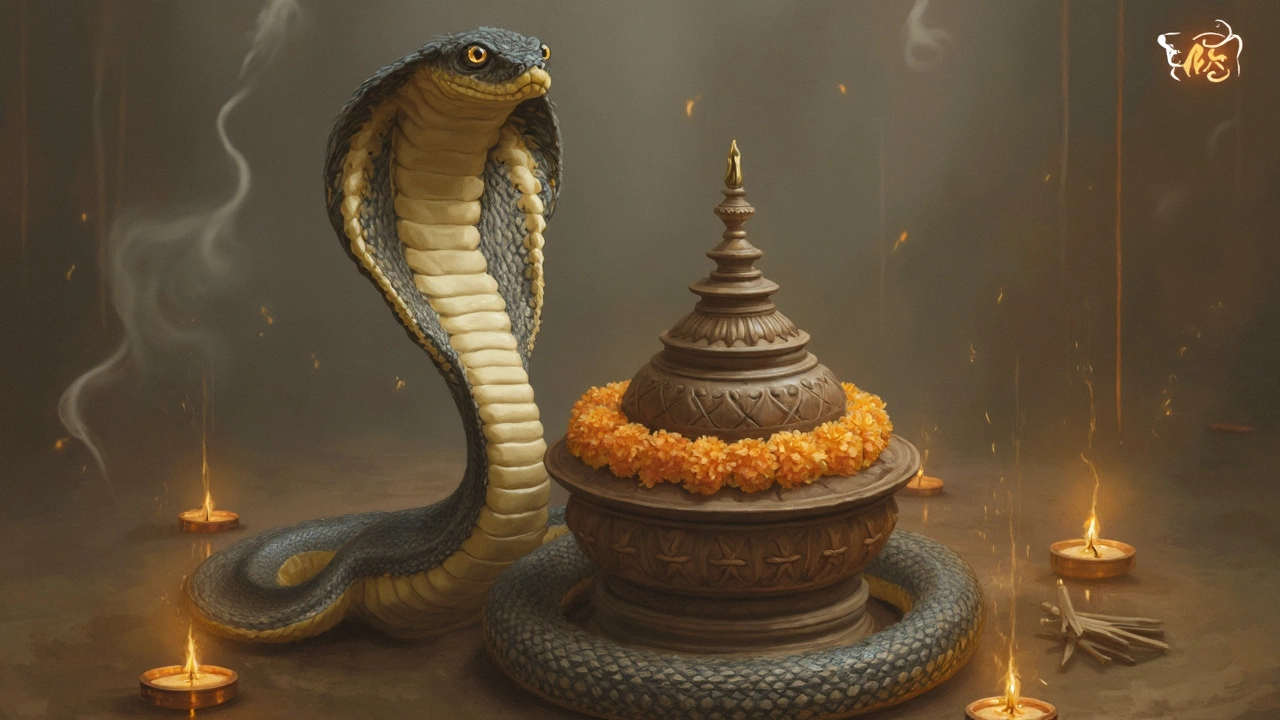When Is Nag Panchami 2025 and What Makes It Unique?
Forget the usual calendar confusion—Nag Panchami 2025 brings its own. This year, the festival lands on Tuesday, July 29, marking the fifth day of the Shukla Paksha in the month of Shravana according to the Hindu lunar calendar. But with the Panchami Tithi running from 11:24 PM on July 28 to 12:46 AM on July 30, people often get puzzled about the exact day for the rituals. Most agree on July 29, but in Gujarat, Nag Panchami will be celebrated a couple of weeks later, on August 13, thanks to their local traditions.
The puja muhurat—the auspicious time for prayers—is a matter of minutes, not hours. Set your alarms; the main window is between 5:41 AM and 8:23 AM, though some pundits suggest 6:00 AM to 8:35 AM. Missing this muhurat is seen as missing the blessings of the Nag Panchami 2025 deities.
Rituals, Symbolism, and Regional Flavors
The focus of Nag Panchami is on venerating serpent gods, or Nag Devtas. In many homes and temples, devotees make offerings of milk, sweets, and fragrant flowers to snake idols. It’s not just about statues, either—live snakes are sometimes offered milk and fed, with snake charmers roaming villages and towns during the festival. The belief is simple: appease these powerful beings and secure protection, good fortune, and thriving health for the family.
The festival isn’t only about personal blessings. It’s rooted in centuries-old tales of co-existence and respect between humans and snakes, symbolizing balance in the natural world. Some traditions see mothers and sisters performing special prayers for the well-being and long lives of their sons and brothers, tying this ritual directly to family bonds.
Each region adds its twist. In northern India, devotees visit Nag temples, bathe the idols, chant mantras, and sometimes even host cultural programs. Gujarat’s distinct tradition—holding Nag Panchami in August—shows how diverse the same festival can be across India. Communities might organize group rituals, decorative processions, or music and dance events, all centering back to the embrace of nature and spiritual harmony.
- Milk, ghee, and flowers are the main offerings for the idols or living snakes.
- Feeding snakes (or at least offering food) is believed to prevent snake bites and misfortune.
- Special mantras and songs fill temples and homes, focusing on gratitude and asking for safety from unseen dangers.
Dive into any Nag Panchami celebration, and you’ll spot a blend of colorful rituals, excitement, and a deep respect for a species both feared and worshipped. It’s not just about traditions—it’s about bridges between people, faith, and the wider world.
